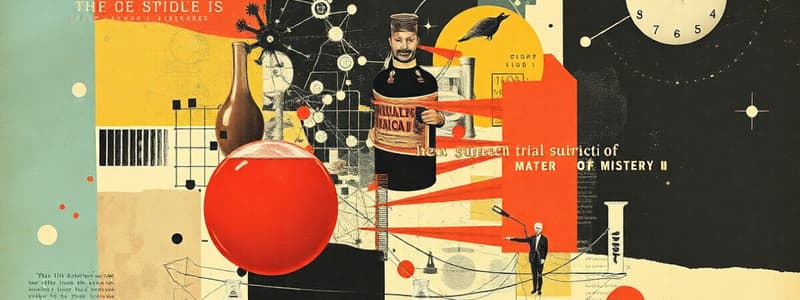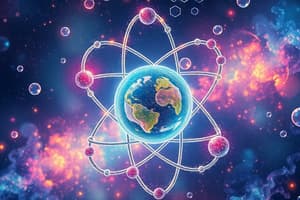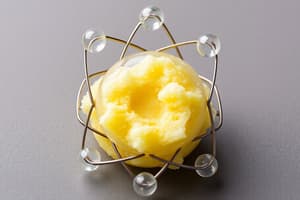Podcast
Questions and Answers
What is the relationship between the number of valence electrons and the group number of an element on the periodic table?
What is the relationship between the number of valence electrons and the group number of an element on the periodic table?
- The group number indicates the number of valence electrons for elements in that group. (correct)
- There is no relationship between the number of valence electrons and the group number.
- The number of valence electrons is always one less than the group number.
- Elements in the same group have the same number of valence electrons.
What is the difference between a substance and a mixture?
What is the difference between a substance and a mixture?
- Substances are always liquids or solids, while mixtures can be gases, liquids, or solids.
- Mixtures are always homogeneous, while substances are always heterogeneous.
- Substances have a fixed composition, while mixtures can vary in composition. (correct)
- Substances are made up of multiple elements, while mixtures are made up of only one element.
Which of the following is NOT an example of a pure substance?
Which of the following is NOT an example of a pure substance?
- Sugar (C12H22O11)
- Air (correct)
- Gold (Au)
- Salt (NaCl)
What is the primary difference between atoms of different elements?
What is the primary difference between atoms of different elements?
What is the relationship between period number and the number of electron shells in an atom?
What is the relationship between period number and the number of electron shells in an atom?
Flashcards
Period (in chemistry)
Period (in chemistry)
A period represents the number of orbitals of an element in the periodic table.
Valence Electron
Valence Electron
Electrons in the outermost shell of an atom, involved in bonding.
Substance
Substance
Material with a definite composition (elements or compounds).
Mixture
Mixture
Signup and view all the flashcards
Atom
Atom
Signup and view all the flashcards
Study Notes
Atomic Structure and Classification of Matter
- Elements have unique atoms, the smallest unit of an element.
- Periods represent the number of orbitals in an atom. Period 1 has 1 orbital.
- Group IA elements have 1 valence electron in their outermost shell.
- Valence electrons are the electrons in the outermost shell of an atom.
Matter Classifications
- Matter is classified into substances and mixtures.
- Substances are further divided into elements and compounds.
- Mixtures can be homogeneous or heterogeneous.
- Specific examples of substance types include acids, bases, and salts.
- Elements can be metals, non-metals, or metalloids.
Atomic Particles
- Atoms consist of protons (+), neutrons (+/-), and electrons (-).
Studying That Suits You
Use AI to generate personalized quizzes and flashcards to suit your learning preferences.





